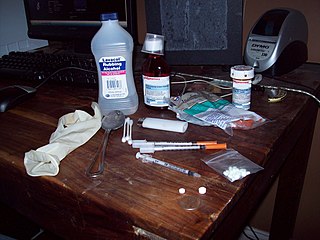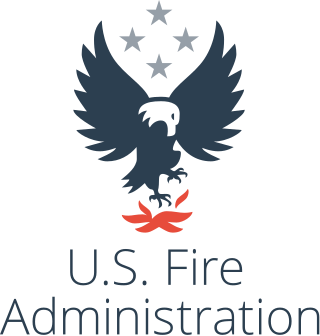The National Institute of Standards and Technology (NIST) is an agency of the United States Department of Commerce whose mission is to promote American innovation and industrial competitiveness. NIST's activities are organized into physical science laboratory programs that include nanoscale science and technology, engineering, information technology, neutron research, material measurement, and physical measurement. From 1901 to 1988, the agency was named the National Bureau of Standards.

Personal protective equipment (PPE) is protective clothing, helmets, goggles, or other garments or equipment designed to protect the wearer's body from injury or infection. The hazards addressed by protective equipment include physical, electrical, heat, chemicals, biohazards, and airborne particulate matter. Protective equipment may be worn for job-related occupational safety and health purposes, as well as for sports and other recreational activities. Protective clothing is applied to traditional categories of clothing, and protective gear applies to items such as pads, guards, shields, or masks, and others. PPE suits can be similar in appearance to a cleanroom suit.
The Occupational Safety and Health Administration is a large regulatory agency of the United States Department of Labor that originally had federal visitorial powers to inspect and examine workplaces. The United States Congress established the agency under the Occupational Safety and Health Act, which President Richard M. Nixon signed into law on December 29, 1970. OSHA's mission is to "assure safe and healthy working conditions for working men and women by setting and enforcing standards and by providing training, outreach, education, and assistance." The agency is also charged with enforcing a variety of whistleblower statutes and regulations. OSHA's workplace safety inspections have been shown to reduce injury rates and injury costs without adverse effects on employment, sales, credit ratings, or firm survival.

Safety is the state of being "safe", the condition of being protected from harm or other danger. Safety can also refer to the control of recognized hazards in order to achieve an acceptable level of risk.

A blood-borne disease is a disease that can be spread through contamination by blood and other body fluids. Blood can contain pathogens of various types, chief among which are microorganisms, like bacteria and parasites, and non-living infectious agents such as viruses. Three blood-borne pathogens in particular, all viruses, are cited as of primary concern to health workers by the CDC-NIOSH: HIV, hepatitis B (HVB), & hepatitis C (HVC).

The Occupational Safety and Health Act of 1970 is a US labor law governing the federal law of occupational health and safety in the private sector and federal government in the United States. It was enacted by Congress in 1970 and was signed by President Richard Nixon on December 29, 1970. Its main goal is to ensure that employers provide employees with an environment free from recognized hazards, such as exposure to toxic chemicals, excessive noise levels, mechanical dangers, heat or cold stress, or unsanitary conditions. The Act created the Occupational Safety and Health Administration (OSHA) and the National Institute for Occupational Safety and Health (NIOSH).

The National Institute for Occupational Safety and Health is the United States federal agency responsible for conducting research and making recommendations for the prevention of work-related injury and illness. NIOSH is part of the Centers for Disease Control and Prevention (CDC) within the U.S. Department of Health and Human Services. Despite its name, it is not part of the National Institutes of Health. Its current director is John Howard.

Fire safety is the set of practices intended to reduce destruction caused by fire. Fire safety measures include those that are intended to prevent the ignition of an uncontrolled fire and those that are used to limit the spread and impact of a fire.

The National Traffic and Motor Vehicle Safety Act was enacted in the United States in 1966 to empower the federal government to set and administer new safety standards for motor vehicles and road traffic safety. The Act was the first mandatory federal safety standards for motor vehicles. The Act created the National Highway Safety Bureau. The Act was one of a number of initiatives by the government in response to increasing number of cars and associated fatalities and injuries on the road following a period when the number of people killed on the road had increased 6-fold and the number of vehicles was up 11-fold since 1925. The reduction of the rate of death attributable to motor-vehicle crashes in the United States represents the successful public health response to a great technologic advance of the 20th century—the motorization of America.

The United States Fire Administration (USFA) is a division of the Federal Emergency Management Agency (FEMA) located in Frederick County, Maryland, near Emmitsburg. Per the official website, "the mission of the U.S. Fire Administration is to support and strengthen fire and emergency medical services (EMS) and stakeholders to prepare for, prevent, mitigate and respond to all hazards".

An occupational hazard is a hazard experienced in the workplace. This encompasses many types of hazards, including chemical hazards, biological hazards (biohazards), psychosocial hazards, and physical hazards. In the United States, the National Institute for Occupational Safety and Health (NIOSH) conduct workplace investigations and research addressing workplace health and safety hazards resulting in guidelines. The Occupational Safety and Health Administration (OSHA) establishes enforceable standards to prevent workplace injuries and illnesses. In the EU, a similar role is taken by EU-OSHA.
Title 42 of the United States Code is the United States Code dealing with public health, social welfare, and civil rights.
Fire-safe cigarettes, abbreviated "FSC", also known as lower ignition propensity (LIP), reduced fire risk (RFR), self-extinguishing, fire-safe or reduced ignition propensity (RIP) cigarettes, are cigarettes that are designed to extinguish more quickly than standard cigarettes if ignored, with the intention of preventing accidental fires. In the United States, "FSC" above the barcode signifies that the cigarettes sold are fire standards compliant (FSC).

A physical hazard is an agent, factor or circumstance that can cause harm with contact. They can be classified as type of occupational hazard or environmental hazard. Physical hazards include ergonomic hazards, radiation, heat and cold stress, vibration hazards, and noise hazards. Engineering controls are often used to mitigate physical hazards.

Occupational safety and health (OSH), also commonly referred to as occupational health and safety (OHS), occupational health, or occupational safety, is a multidisciplinary field concerned with the safety, health, and welfare of people at work. These terms also refer to the goals of this field, so their use in the sense of this article was originally an abbreviation of occupational safety and health program/department etc.

The Federal Fire Prevention and Control Act of 1974 was created in response to the 1973 National Commission on Fire Prevention and Control report, America Burning. The report's authors estimated fires caused 12,000 deaths, 300,000 serious injuries and $11.4 billion in property damage annually in the United States, asserting that "the richest and most technologically advanced nation in the world leads all the major industrialized countries in per capita deaths and property loss from fire." The report proposed that a federal agency be established to help combat the growing problem of fatal fires happening throughout the country. The S. 1769 legislation was passed by the 93rd Congressional session and enacted by the 38th President of the United States Gerald Ford on October 29, 1974.
The U.S. National Commission on Fire Prevention and Control was a Presidential Commission appointed by President Richard Nixon in June 1971. It submitted its final report, America Burning, in May 1973.

Radiation Control for Health and Safety Act of 1968 was an amendment to the Public Health Service Act mandating performance standards for electronic products suspectible of electromagnetic radiation or radiation emissions. The United States statute established provisions involving research and development programs for the studies of electromagnetic shielding, ionizing radiation, non-ionizing radiation, and exposure assessment to humans.

The NIST World Trade Center Disaster Investigation was a report that the National Institute of Standards and Technology (NIST) conducted to establish the likely technical causes of the three building failures that occurred at the World Trade Center following the September 11, 2001 terrorist attacks. The report was mandated as part of the National Construction Safety Team Act, which was signed into law on October 1, 2002 by President George W. Bush. NIST issued its final report on the collapse of the World Trade Center's twin towers in September 2005, and the agency issued its final report on 7 World Trade Center in November 2008.
The National Earthquake Hazards Reduction Program (NEHRP) was established in 1977 by the United States Congress as part of the Earthquake Hazards Reduction Act of 1977. The original stated purpose for NEHRP was "to reduce the risks of life and property from future Earthquakes in the United States through the establishment and maintenance of an effective earthquake hazards reduction program." Congress periodically reviews and reauthorizes NEHRP, with the most recent review happening in 2018.













